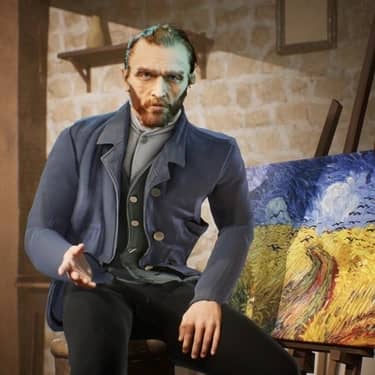The world of art and technology "fit" each other more and more like a glove. Technologies like AI, deepfakes, holograms and others are arriving at the right mix of maturity and convergence. And now they have met in an extraordinarily innovative way at the Musée D'Orsay in Paris, through the “Hello Vincent” project. This initiative pioneering generative artificial intelligence offers visitors to the “Van Gogh in Auvers-sur-Oise” exhibition a unique opportunity: to interact directly with Vincent van Gogh.
A personalized meeting with Van Gogh
“Hello Vincent” is based on a corpus of approximately 900 letters written by Van Gogh, through which the Dutch artist shared reflections on his life and work. Thanks to this vast collection of personal writings, artificial intelligence is able to provide answers that reflect Van Gogh's knowledge and personality, creating an interactive and personalized dialogue with visitors.
Using a microphone connected to an interactive terminal, people can even converse with the artist while he is busy painting his famous painting “Wheatfield with Crows”. A decidedly broader horizon than what, for example, the "digital resurrection" allowed some time ago by Salvador Dali as a guide at another cultural event, or that of Marilyn Monroe as a cover girl.

Scientific-artistic collaboration
The development of “Hello Vincent” is the result of a collaboration between the startup Jumbo Mana and Dr. Wouter van der Veen, art historian specializing in Van Gogh. The project received financial support from BPI France and the Grand-Est region, with support from the University of Paris-Saclay and the Institute for Development and Resources in Intensive Scientific Computing (IDRIS) for access to the Jean-Zay supercomputer.
This combination of academic and applied research, which I find very stimulating, is a key to imitate and replicate. It allowed us to create an experience that combines entertainment and education, bringing visitors closer to the figure of Van Gogh in an innovative and engaging way.
Cutting-edge technology for an immersive experience
“Hello Vincent” is a clear example of how technology can enrich the museum experience, offering users direct interaction with historical art figures. Artificial intelligence, connected to human behavior and language, makes Vincent van Gogh a virtual interlocutor, capable of learning and improving thanks to visitors' questions.
The availability of this experience in open access at the Musée D'Orsay demonstrates the intent to make culture and knowledge accessible to all, in a format that is as innovative as it is educational.
It's Van Gogh, but it's not Van Gogh
“Hello Vincent” is at the intersection of past and present. It can be used as a model to explore in ever deeper ways the life and work of past artists, it can enrich the cultural experience of its guests, it can open new avenues for artistic education and dissemination.
Rhetorical question: can it supplant the real Van Gogh? Certainly not. He should be considered rather an "Assistant to the memory" of the artist. A digital avatar is trained on all of someone's production, but it's not him: it's a simulacrum that helps us know who he represents.
Towards the future of interactive art
The use of advanced technologies to create immersive and personalized experiences lays the foundations for new ways of enjoying art, where the dialogue between the public and the works is no longer one-way but becomes a truly interactive exchange. A bridge to connect the public with the great artistic minds of the past.
In the coming years we will experience a new exploration of art, and also of our own creativity. All that remains is to experience this passage with an open mind: and perhaps, in homage to Maestro Vincent, add a pinch of madness.


